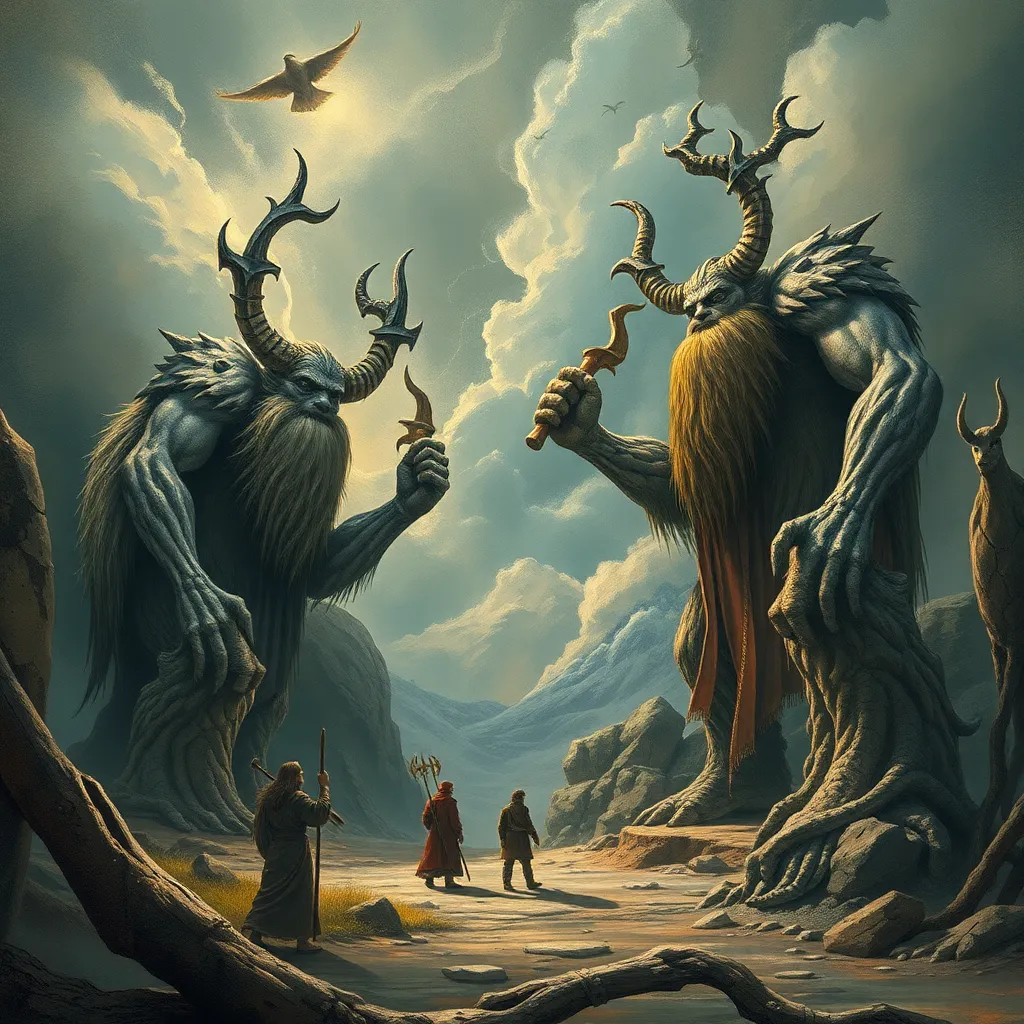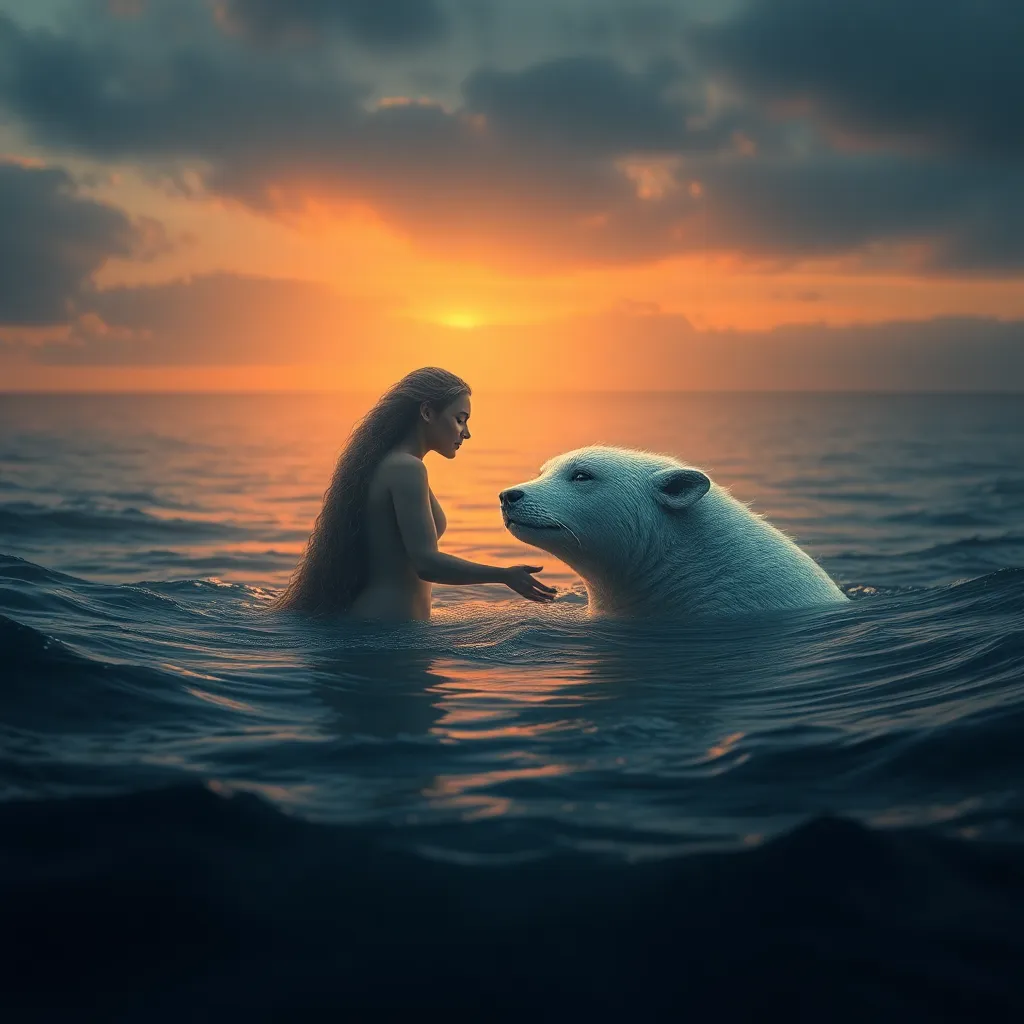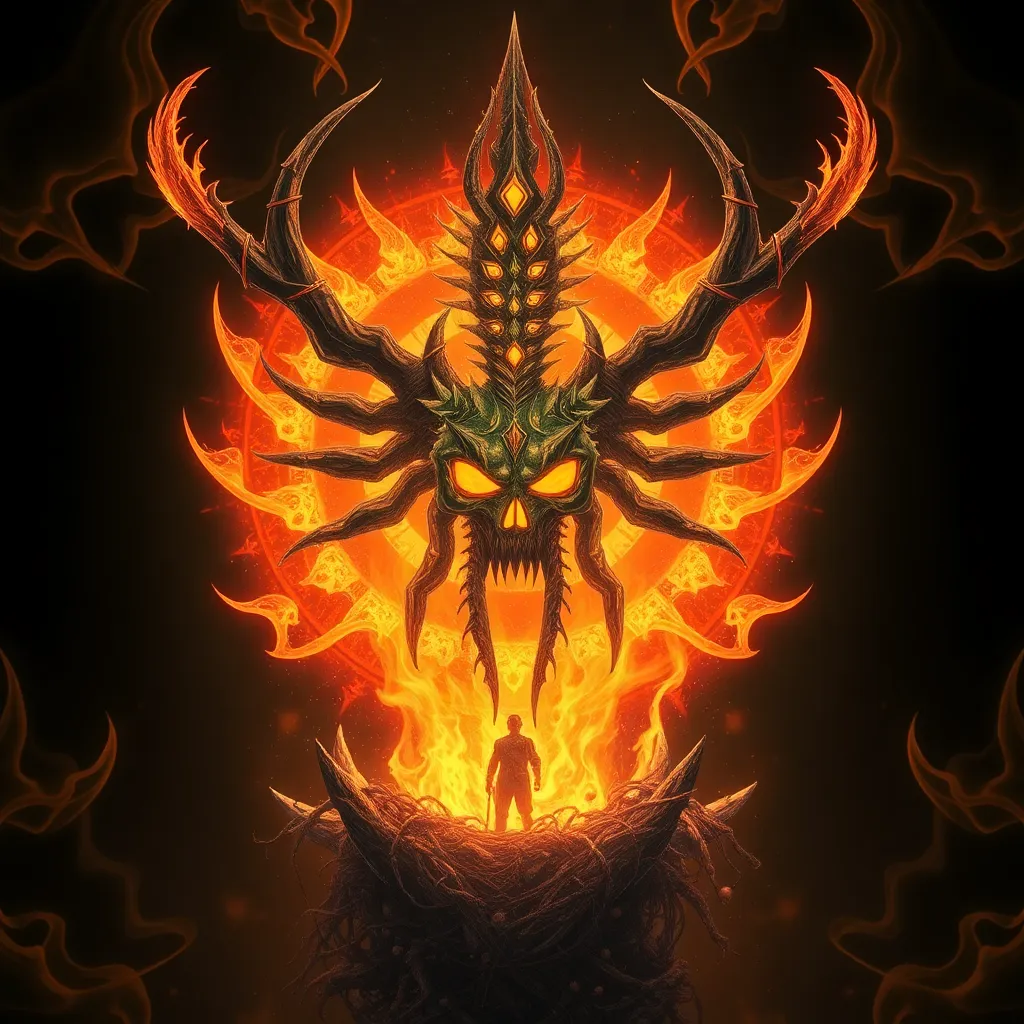The Hecatoncheires and the Giants of Norse Mythology: Connections and Contrasts
I. Introduction
The realms of ancient mythology are filled with awe-inspiring figures, each representing various aspects of existence, nature, and the human condition. Among these figures, the Hecatoncheires of Greek mythology and the giants of Norse mythology stand out as powerful embodiments of chaos and primal force. This article delves into the connections and contrasts between these two mythological entities, exploring their origins, roles, and the cultural significance they hold in their respective traditions.
II. Origins of the Hecatoncheires
A. Mythological background and genealogy
The Hecatoncheires, often referred to as the “Hundred-Handed Ones,” were three monstrous giants named Cottus, Briareus, and Gyges. According to Greek mythology, they were born to Uranus (the sky) and Gaia (the earth), making them siblings of the Titans. Their immense size and strength, coupled with their hundred hands and fifty heads, symbolized overwhelming power and chaos.
B. Role in the Titanomachy
During the Titanomachy, the great war between the Titans and the Olympian gods, the Hecatoncheires played a crucial role. They were initially imprisoned by their father Uranus, but were freed by Zeus. Their strength and multitude of arms enabled them to hurl enormous rocks at the Titans, significantly contributing to the Olympians’ victory.
C. Symbolism and significance in Greek myth
The Hecatoncheires symbolize not only physical power but also the chaotic forces of nature that can disrupt order. They represent the idea that strength can be both a blessing and a curse, capable of protecting or destroying.
III. Origins of the Giants in Norse Mythology
A. Creation myths and the lineage of the giants
In Norse mythology, giants, or “Jotnar,” are one of the primary races, often considered the adversaries of the gods. According to the Prose Edda, the first being, Ymir, emerged from the melting ice of Niflheim and was both a giant and a source of creation. The gods Odin, Vili, and Ve later killed Ymir, using his body to create the world.
B. Key figures among the giants (e.g., Ymir, Surtr)
Among the notable giants are:
- Ymir: The primordial giant whose body formed the earth.
- Surtr: A fire giant who plays a pivotal role in Ragnarok, the end of the world.
C. Their role in Norse cosmology and the creation of the world
The giants in Norse cosmology represent the untamed forces of nature. They contrast with the gods, who embody order and civilization. The constant conflict between gods and giants highlights the struggle between creation and destruction.
IV. Physical Attributes and Abilities
A. Description of the Hecatoncheires’ appearance and powers
The Hecatoncheires are described as having a formidable and terrifying appearance, with each possessing one hundred arms and fifty heads. Their immense size allowed them to wield incredible power, making them formidable opponents in battle.
B. Characteristics of Norse giants and their abilities
Norse giants, in contrast, are often depicted as large, sometimes grotesque beings, embodying the raw aspects of nature. They possess various abilities, such as shapeshifting, immense strength, and magic, which they use in their conflicts with the gods.
C. Comparisons of physical attributes and their implications in their respective myths
Both the Hecatoncheires and Norse giants exemplify the theme of physical power, yet their representation differs:
- The Hecatoncheires symbolize chaotic strength that can be harnessed for order.
- Norse giants represent the uncontrollable forces of nature that challenge divine order.
V. Roles in Mythological Conflicts
A. The Hecatoncheires in the battles against the Titans
The Hecatoncheires played a decisive role in the Titanomachy, using their immense strength to assist Zeus and the Olympians. Their ability to throw enormous boulders at the Titans exemplified their chaotic nature but also their alignment with order.
B. The giants in the context of Ragnarok and their conflicts with the gods
In Norse mythology, giants are central figures in Ragnarok, the apocalyptic battle that leads to the death of many gods, including Odin and Thor. Giants, led by Surtr and other notable figures, serve as agents of chaos that challenge the established order of the gods.
C. Analysis of how both figures embody chaos and challenge order
Both the Hecatoncheires and Norse giants embody chaos, serving as formidable challenges to the divine order. Their battles against gods reflect the ongoing struggle between chaos and order, a theme prevalent in both mythologies.
VI. Symbolism and Themes
A. The Hecatoncheires as symbols of raw power and rebellion
The Hecatoncheires symbolize raw, untamed power and rebellion against tyranny, as they were imprisoned by Uranus and later fought against the Titans. Their liberation and subsequent battle against the Titans illustrate the theme of overcoming oppression.
B. The giants as representations of nature’s untamed forces
Norse giants embody the primal forces of nature, representing elements such as chaos, destruction, and the unpredictable aspects of the world. They stand in opposition to the gods, who symbolize civilization and order.
C. Comparative analysis of themes such as duality, chaos, and creation
Both mythologies explore themes of duality, chaos, and creation. The Hecatoncheires and giants illustrate the balance between order and chaos, creation and destruction, reflecting the complexities of existence and the human condition.
VII. Cultural Impact and Legacy
A. Influence of the Hecatoncheires in art and literature
The Hecatoncheires have influenced various art forms, from ancient sculptures to modern literature, often depicted as symbols of strength and chaos. Their stories resonate with themes of rebellion and the struggle against oppression.
B. Representation of giants in Norse saga and modern media
Norse giants have a significant presence in sagas and modern media, often portrayed as powerful adversaries or tragic figures. Their depiction in films, books, and video games highlights their enduring legacy in contemporary culture.
C. How both figures have shaped cultural narratives in Western tradition
Both the Hecatoncheires and Norse giants have profoundly impacted cultural narratives in the Western tradition, symbolizing the eternal struggle between chaos and order, creation and destruction. They continue to inspire stories that explore these themes in various artistic expressions.
VIII. Conclusion
In summary, the Hecatoncheires and the giants of Norse mythology share striking connections and contrasts, serving as powerful symbols of chaos and primal forces. Their roles in mythological conflicts and the themes they embody provide valuable insights into human archetypes and the complexities of existence.
As we reflect on the significance of these mythological figures, we recognize their enduring legacy in contemporary culture, reminding us of the timeless narratives that shape our understanding of the world.



